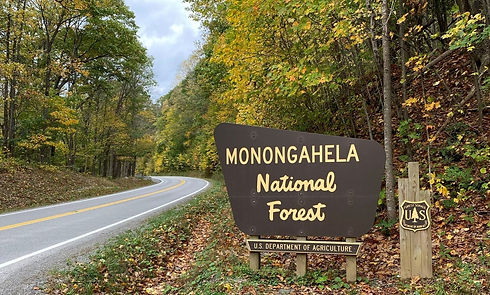Monongahela National Forest

Planting in this forest.
In 2019, Monongahela National Forest undertook a significant restoration project in partnership with the nonprofit organization Green Forests Work. The initiative focused on reforesting 100 acres of a former surface mining site within the Mower Tract, an area that had experienced limited natural regeneration over several decades. The compacted soils resulting from past mining activities contributed to sedimentation in the watershed, necessitating active restoration efforts.
To address these challenges, approximately 50,000 native red spruce seedlings were planted. The selection of red spruce was strategic, as this species is integral to the region's high-elevation ecosystems, providing critical habitat for wildlife such as the northern flying squirrel and the Cheat Mountain salamander. The reforestation aimed to restore the native red spruce forest, thereby enhancing biodiversity and ecological resilience.
Beyond habitat restoration, the project sought to improve watershed health. The reestablishment of red spruce forests plays a vital role in increasing the water storage capacity of areas like Cheat Mountain, which in turn improves water quality in the Shavers Fork watershed. By reducing sediment runoff, the initiative contributed to the overall health of aquatic ecosystems downstream.
This 2019 effort was part of a broader, long-term commitment to rehabilitate lands affected by surface mining in the Central Appalachian region. The collaboration between various organizations and agencies has been instrumental in reclaiming these landscapes, transforming them from degraded lands into thriving forests that support diverse plant and animal life.




Location
West Virginia, USA
Project Type
Reforestation
Environmental Benefits
Wildlife Habitat Restoration
Enhanced Biodiversity
Soil Stabilization and Erosion Control
Watershed Health Improvement
Climate Resilience and Carbon Sequestration
About this forest
Monongahela National Forest, located in the highlands of West Virginia, covers over 900,000 acres of rugged mountains, dense hardwood forests, and winding rivers. It provides critical habitat for diverse wildlife, including black bears, red spruce-dependent species, and native brook trout. The forest offers recreational opportunities such as hiking, fishing, and camping, while ongoing restoration efforts focus on preserving its ecological integrity and resilience.




